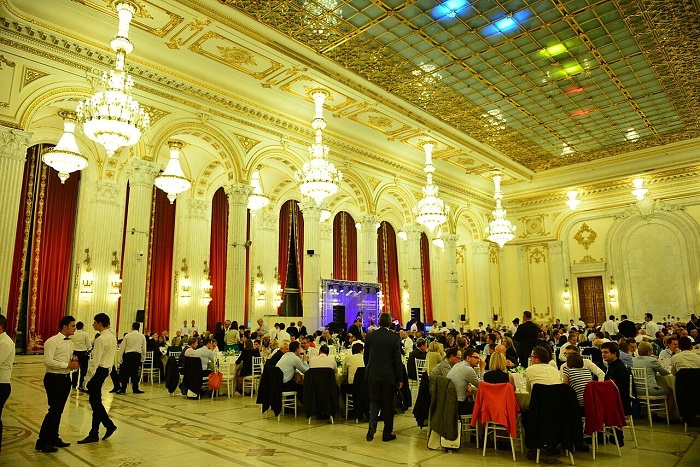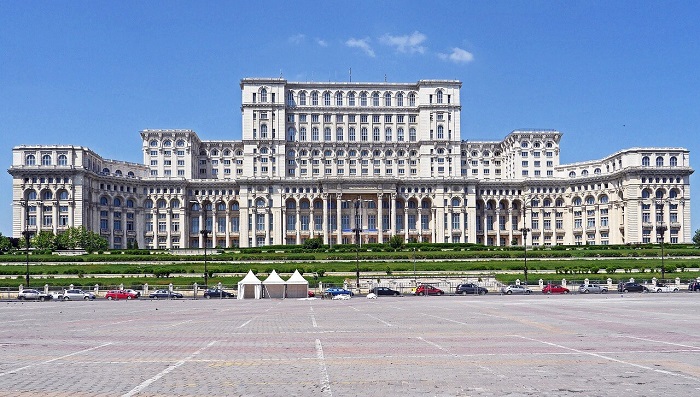ISABEL RUBIO ARROYO | Tungsteno
From the One World Trade Center and the Great Pyramid of Giza to the Great Mosque of Mecca and the Burj Khalifa. These are some of the heaviest structures in the world. But first place goes to a building in Bucharest, the capital of Romania, which boasts dizzying numbers. It is the Palace of Parliament, which weighs in at four million tonnes. According to the Guinness Book of World Records, 700,000 tonnes of steel and bronze, one million cubic metres of marble, 3,500 tonnes of crystal glass and 900,000 cubic metres of wood were used to build this controversial megastructure.
The People's Palace, but without the people
After the earthquake of 4 March 1977 damaged much of Bucharest, dictator Nicolae Ceaușescu launched a plan to rebuild the city. Romania's communist-era leader wanted to construct a building that was bigger and more impressive than the Kremlin in Moscow and the White House in Washington DC. The result was the Palace of Parliament, which was originally called the People's Palace, a somewhat ironic name given that much of the population suffered food shortages and power cuts while two billion dollars was poured into this massive project for the ruling class.
Construction, which began in 1984, was not without controversy because part of Bucharest’s historic centre had to be demolished, including churches, synagogues, monasteries and houses. People were told in the morning to pack up and leave, and by noon the bulldozers arrived and began demolishing everything in sight, according to the website Atlas Obscura, which reports that over 40,000 people were displaced and 9,000 homes torn down.
The Palace of Parliament is the second largest administrative building in the world after the Pentagon. Credit: Earth 3D Map.
From 1,000 rooms to an underground bunker
Later, some 20,000 workers, 5,000 army personnel and 700 architects set to work. Romanian state-owned factories were used to decorate the interiors with silver brocade curtains and gold leaf ceilings. Construction was intended to take two years, but of the more than 1,000 rooms inside the building, only about 400 have been completed.
What particularly sets this building apart is its stratospheric size. With a height of 84 metres and a total surface area of 365,000 square metres, it is the second largest structure in the world after the Pentagon in the United States. Inside, in addition to over a thousand rooms, there is a concert hall that seats 4,000 people and a conference centre for more than 1,500 attendees. Some of the rooms are even larger than half a football pitch, according to The Guardian.

The Palace of Parliament houses the Bucharest International Conference Centre. Credit: European People's Party.
The palace's Union Hall features two large spiral staircases leading down to the main entrance. Ceaușescu wanted to make grand, synchronised entrances together with his wife Elena. "He was short and touchy about his height, so he had the staircases rebuilt twice in order to match his step," a parliamentary aid tells CNN. The building also has eight underground levels. The dictator feared nuclear war, so he ordered the construction of a bunker with concrete walls 1.5 metres thick to protect government leaders in the event of an attack.
Turn the building into a theme park or a casino?
Ceaușescu was the leader of Romania from 1965 until he was overthrown and shot in the revolution of 1989. At the time of his death, most of the exterior of the Palace of Parliament had been completed, but the interior was unfinished. The new government did not know what to do with the project. "They couldn’t afford to demolish the buildings, but they also didn’t have the money to mute the dreaded feeling that they exude. They were really profoundly monumental remains of this recent past that everyone wanted to forget," says Emanuela Grama of Carnegie Mellon University.
There were various proposals for what to do with the building, from turning it into a theme park or shopping mall to creating the world's largest casino. But none of these ideas came to fruition. Today it houses the Romanian Senate and Chamber of Deputies, the Bucharest International Conference Centre and the National Museum of Contemporary Art. Its sheer size and all the history behind it have made it one of Bucharest's main tourist attractions, as well as the setting for films and television programmes from around the world.
· — —
Tungsteno is a journalism laboratory to scan the essence of innovation.
